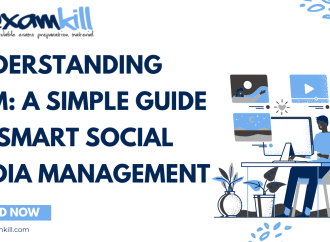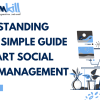Introduction A high-performance work culture is what separates average teams from ones that grow fast, stay strong, and deliver results consistently. It’s not about making people work harder—it’s about creating an environment where people want to do their best, feel trusted, and understand how their work matters. When employee engagement is real, team accountability is
Introduction
A high-performance work culture is what separates average teams from ones that grow fast, stay strong, and deliver results consistently. It’s not about making people work harder—it’s about creating an environment where people want to do their best, feel trusted, and understand how their work matters. When employee engagement is real, team accountability is clear, and workplace productivity is supported by good habits, performance becomes natural. This article gives simple, practical steps any leader or team can use to develop a high-performance work culture that lasts.
Developing a High-Performance Work Culture
1. Start with Clear Purpose and Shared Goals
High-performance work culture begins with clarity. People need to know what the team is trying to achieve and why it matters. A clear purpose gives meaning to daily tasks. Shared goals connect individual work to the bigger picture. Break down high-level company aims into team goals and then into day-to-day priorities. When everyone sees how their part moves the needle, engagement rises and effort focuses where it counts.
Make goals visible—on team boards, dashboards, or in regular check-ins. Use simple language. Avoid vague statements. Instead of “improve customer experience,” say “reduce support response time to under 2 hours” or “increase repeat orders by 15% this quarter.” Specificity helps people act.
2. Lead by Example
Leaders set the tone. In a high-performance culture, leaders model the behavior they want to see. That means being accountable, showing up prepared, communicating openly, admitting mistakes, and giving clear feedback. If leaders value learning, the team will too. If leaders respect time, the team respects deadlines.
Consistency matters more than perfection. When leadership follows the same processes they expect from others—like attending regular check-ins, sharing progress, and keeping promises—trust grows. Trust is a core pillar. Without it, accountability feels like blame and goals feel like orders.
3. Hire and Onboard for the Culture
You can’t build great culture by accident. Hiring must include culture fit, not just skill match. Look for people who show curiosity, ownership, honesty, and a growth mindset. Ask behavioral questions: “Tell me about a time you fixed a mistake without being asked” or “How do you handle feedback that surprises you?”
Onboarding is the first cultural lesson. New team members should quickly understand how decisions get made, what good work looks like, and who to turn to when stuck. A short culture guide or a peer buddy system speeds ramp-up and makes newcomers feel part of the team from day one.
4. Build Routine Feedback Loops
High-performance cultures don’t wait for annual reviews. They use fast, frequent feedback. This includes:
- Weekly one-on-ones focused on progress, priorities, and development
- Peer feedback in short cycles
- Team retrospectives after projects: what worked, what to fix
- Public acknowledgment of wins and private coaching on gaps
Feedback should feel helpful, not punitive. Train leaders and teammates to ask guiding questions (“What would you do differently next time?”) instead of just pointing out faults. The goal is learning and adjustment, which keeps workplace productivity improving.
5. Empower Ownership and Accountability
Performance thrives when people own outcomes. Empowerment means giving clear outcomes and letting teams choose how to reach them. Avoid micromanaging methods; instead, define expectations, provide support, and trust people to execute.
Accountability is the flip side of ownership. Make progress visible in a non-shaming way. Regular status updates—short and factual—help the team self-correct early. If something misses the mark, ask “What stopped us?” and “What will we change?” Focus on systems and solutions, not blame. This keeps culture safe and productive.
6. Invest in Learning and Growth
High performers keep learning. A work culture that supports growth gives time and tools for skill building. Simple actions include:
- Short internal learning sessions or “lunch and learn” talks
- Peer teaching or shadowing
- Access to micro-courses or book summaries
- Development plans discussed regularly in one-on-ones
Make learning part of work, not “extra.” When people see that improvement is valued, they stay engaged and bring fresh ideas to problems.
7. Create Psychological Safety
People perform best when they feel safe to speak up. Psychological safety means team members can share ideas, admit mistakes, and raise concerns without fear of humiliation or retaliation. Practices that build this:
- Encourage open questions in meetings (“What are we missing?”)
- Celebrate curiosity and the process, not just outcomes
- Have leaders model vulnerability (e.g., admit what they don’t know)
- Use “what went well / what could improve” formats that are balanced
When safety is present, friction turns into productive debate, and innovation grows.
8. Recognize the Right Behaviors
Recognition reinforces values. A high-performance work culture highlights both results and the way they were achieved. Examples of recognition:
- Quick shout-outs in team syncs for helping others
- Peer-nominated awards for collaboration or initiative
- Small rewards for consistent improvement or ownership
- Public stories of problem-solving with the right mindset
Recognition doesn’t need to be money. A thank-you note, extra autonomy, or a “culture champion” shout-out builds pride and repeat behavior.
9. Remove Friction and Provide the Right Tools
Even the most motivated team can stumble if systems slow them down. Track common bottlenecks in workflow and fix them. Provide tools that help, not hurt: clear templates, reliable software, and documented processes. Standardize routine tasks so the team spends time on impact, not on figuring out how to start.
Ask teams what slows them. Often the fix is simple: a faster approval process, fewer meetings, better documentation. Removing small daily annoyances boosts workplace productivity significantly.
10. Align Rewards with Culture
If compensation and promotion systems reward only output without regard for how work is done, culture degrades. Align rewards with high-performance values: collaboration, learning, responsibility, and results. Ensure people who mentor others, raise the bar, and help fix system issues are seen and rewarded, not just those who hit numbers alone.
Transparency in how performance and promotion decisions are made also prevents confusion and builds trust.
11. Measure What Matters
You can’t improve culture and performance if you don’t track signals. Use simple metrics:
- Employee engagement pulses (short regular surveys)
- Retention of top contributors
- Frequency of feedback or coaching conversations
- Team goal completion rates
- Time spent on learning or internal improvement
- Cross-team collaboration indicators
Combine hard results with cultural check-ins. If productivity is high but engagement drops, the culture may be burning out people. Adjust before fatigue turns into turnover.
12. Sustain and Scale the Culture
As teams grow, culture can dilute unless reinforced. To scale a high-performance work culture:
- Document core values and working rituals
- Train new people explicitly on how the team works
- Keep founders’ habits alive (goal reviews, feedback routines)
- Empower culture ambassadors who model and surface examples
- Repeat language and stories that reflect what success looks like
Scaling isn’t copying old practices blindly—it’s adapting them so new members feel the same clarity, ownership, and safety.
Conclusion
Developing a high-performance work culture is a choice you make daily. It starts with clear goals and purpose, grows through leadership by example, and is kept alive by regular feedback, ownership, learning, and psychological safety. When employee engagement is real, team accountability is healthy, and tools support rather than block work, productivity becomes consistent and sustainable. Recognize behavior that reflects your values, measure both culture and output, and scale intentionally. A strong work culture doesn’t just boost results—it keeps people motivated, aligned, and proud to contribute. Commit to the steps above, and your organization will shift toward performance that lasts.






















